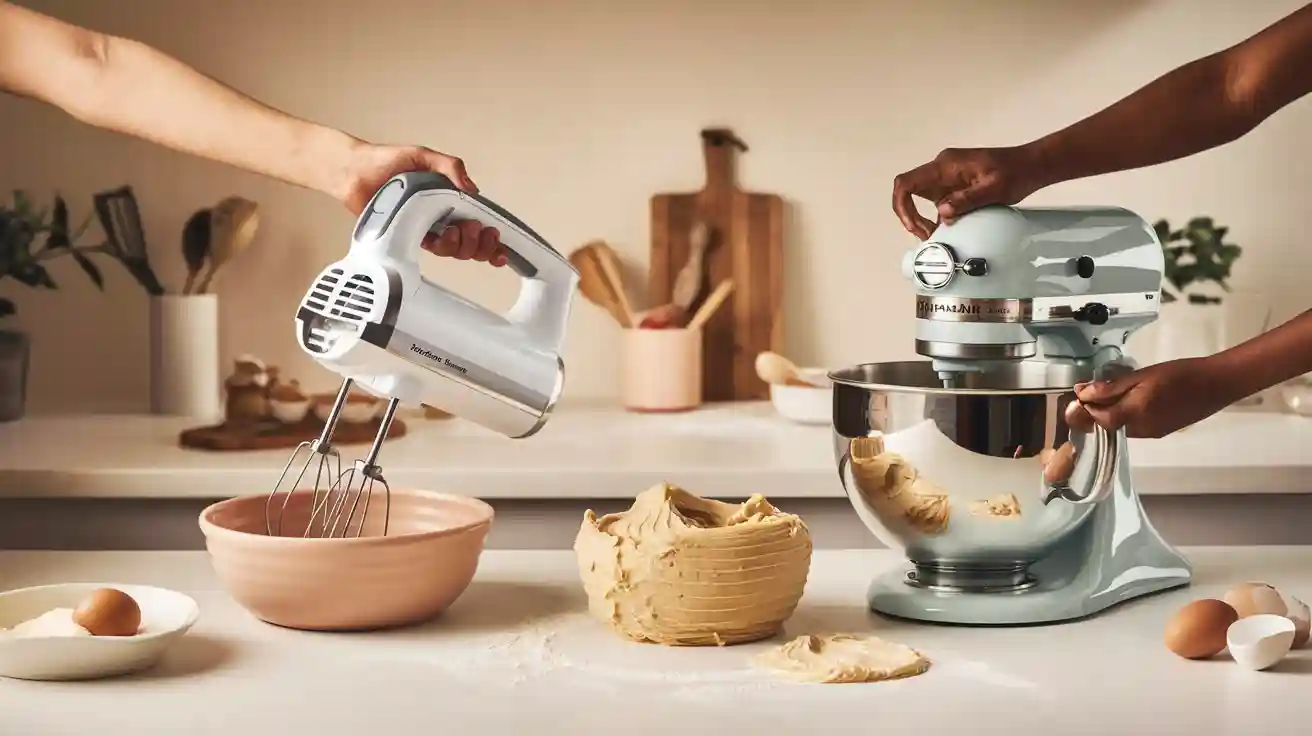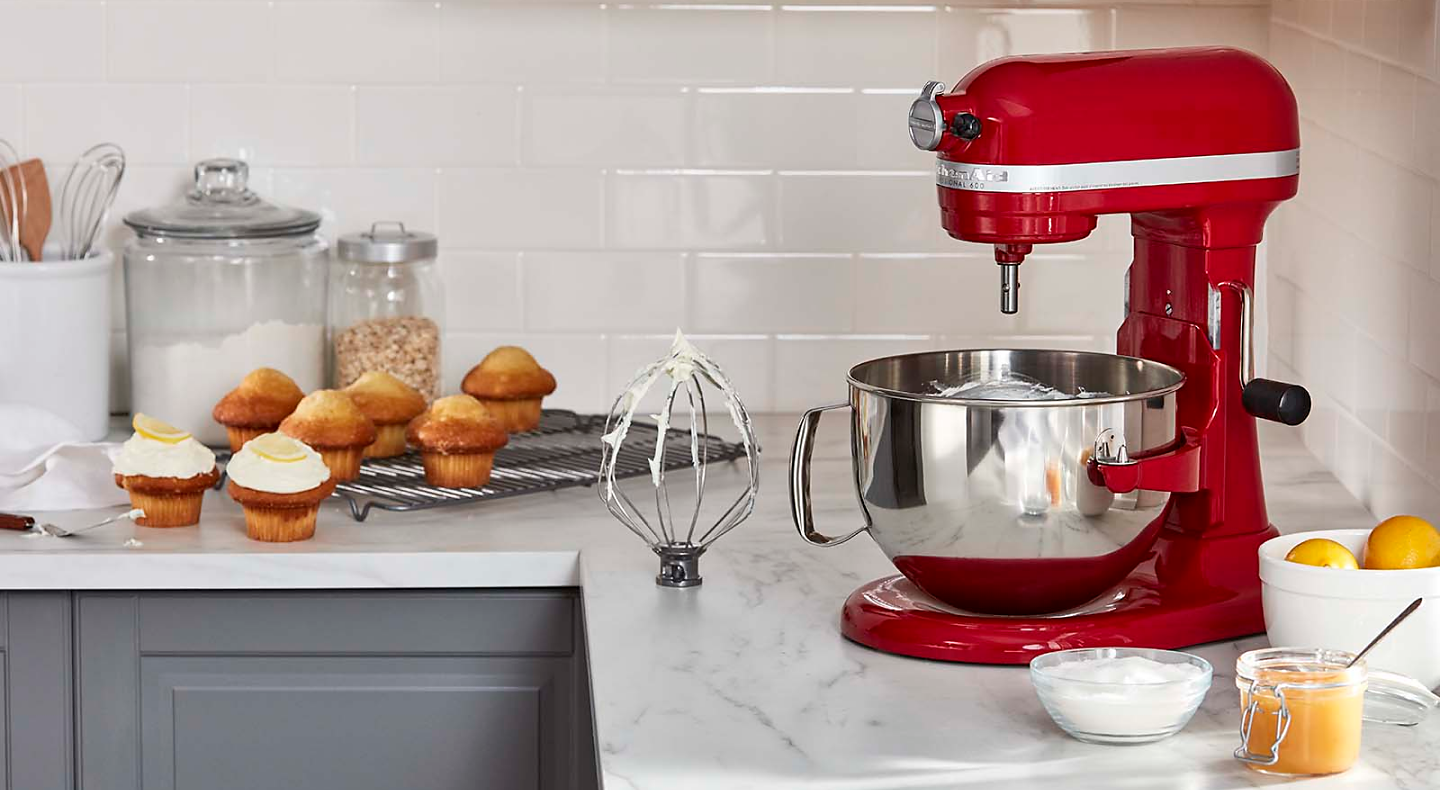Ever found yourself halfway through a recipe, arm aching, with a bowl of lumpy batter staring back at you? We’ve all been there. It’s that moment you realize a simple whisk just won’t cut it. That’s where a great electric hand mixer becomes your kitchen’s unsung hero. If you’re on the hunt for the Best Hand Mixer 2025, you’ve come to the right place. We’re about to dive deep into everything you need to know to find the perfect partner for your culinary adventures, transforming your baking from a chore into a joy.
A Brief History: From Egg Beaters to Electric Powerhouses
Before we get into the nitty-gritty of modern mixers, let’s take a quick trip back in time. The first hand-cranked egg beaters emerged in the mid-19th century, a revolutionary invention that saved countless hours of manual whisking. But the real game-changer was the electric hand mixer, which started buzzing into homes in the early 20th century. What was once a luxury item has now become an indispensable kitchen staple, evolving from clunky, heavy machines to the sleek, powerful, and ergonomic models we see today.
What Should I Look for in the Best Hand Mixer 2025?
Choosing the best hand mixer 2025 isn’t just about picking the prettiest color. It’s about matching the machine’s capabilities to your baking style. Here are the core features you absolutely need to consider.
Power and Performance: It’s All About the Wattage
The motor is the heart of your hand mixer. Wattage is a good indicator of its power, but it’s not the whole story. A well-designed motor with 200-250 watts is often more than enough for most home baking tasks like whipping cream, mixing cake batter, and beating egg whites. For those who frequently tackle denser doughs, like thick cookie batter, look for models with higher wattage (300W and up) as they provide more torque—the rotational force needed to push through tough mixtures without straining or overheating.
Speed Control: From a Gentle Stir to a Furious Whip
A mixer with multiple speed settings gives you control and versatility. Look for models with at least 5 speeds, plus a “turbo” boost for when you need an extra burst of power.
- Low Speeds: Essential for gently incorporating dry ingredients like flour without creating a dust cloud in your kitchen. A “slow-start” feature is a fantastic bonus that gradually brings the beaters up to speed, preventing splatters.
- Medium Speeds: Perfect for creaming butter and sugar or mixing standard cake and brownie batters.
- High Speeds: Necessary for whipping egg whites into stiff peaks for meringues or aerating cream for a light, fluffy topping.
“For a beginner baker, a hand mixer with a true slow-start feature is a lifesaver. It’s the difference between a clean countertop and a flour-dusted kitchen. It gives you the confidence to mix without the mess.” – Pastry Chef Isabelle Dubois
Attachments and Versatility: More Than Just Beaters
The standard twisted-wire beaters are great all-rounders, but the best hand mixer 2025 models come with a suite of attachments that can expand your culinary horizons.
- Balloon Whisk: This single, large whisk is a master at incorporating air. It’s your go-to for making light meringues, airy soufflés, and perfectly whipped cream.
- Dough Hooks: Shaped like corkscrews, these are designed for light kneading tasks, like pizza or bread dough. They won’t replace a stand mixer for heavy-duty bread making, but they’re fantastic for small batches.
- Beaters: Look for high-quality stainless steel beaters. Some modern designs are silicone-tipped to scrape the bowl as you mix, reducing the need to stop and use a spatula.
Corded vs. Cordless: The Freedom of Choice
This is a major consideration in modern kitchen appliances.
- Corded Mixers: These are the traditional workhorses. They offer consistent, uninterrupted power and are generally more powerful and affordable. The only downside is being tethered to an outlet. Look for a model with a long, swiveling cord for better maneuverability.
- Cordless Mixers: The ultimate in convenience. You can mix anywhere in your kitchen without worrying about the cord getting in the way. However, they are typically less powerful, have a limited run time before needing a recharge, and come with a higher price tag. They are perfect for quick, light tasks but may not be ideal for a long baking session.
How to Use Your Hand Mixer Like a Pro
Got your new mixer? Fantastic! Using it correctly will make a world of difference in your results.
- Choose the Right Bowl: Use a deep bowl with high sides to contain splatters. Glass or metal bowls are generally better than plastic, which can retain grease and prevent egg whites from whipping up properly.
- Attach the Beaters Securely: Make sure the mixer is unplugged. Insert the beaters until you hear a firm “click.” Most mixers have a designated slot for each beater, so check your manual.
- Start Low, Go Slow: Always begin mixing on the lowest speed. This gently combines the ingredients and prevents flour or liquid from flying everywhere.
- Gradually Increase Speed: Once the ingredients are incorporated, you can slowly ramp up the speed to the level required by your recipe.
- Keep it Moving: Don’t just hold the mixer in one spot. Move it around the bowl in a circular or figure-eight motion to ensure everything is mixed evenly. Occasionally tilt the bowl to help the beaters reach all areas.
- Eject and Clean: Once you’re done, turn off and unplug the mixer before removing the beaters. Most models have an eject button for easy, touch-free removal.
Hand Mixer vs. Stand Mixer: Which One Do You Need?
This is a classic kitchen debate. The truth is, they serve different purposes, and many avid bakers own both.
| Feature | Hand Mixer | Stand Mixer |
|---|---|---|
| Best For | Quick tasks, small batches, everyday baking (cakes, cookies, whipped cream) | Large batches, heavy doughs (bread), hands-free mixing |
| Cost | Generally affordable ($20 – $100) | Significant investment ($200 – $700+) |
| Size & Storage | Compact, easy to store in a drawer or cupboard | Bulky, requires significant counter or storage space |
| Convenience | Grab-and-go, portable, can be used with any bowl | Set it and forget it, allows for multitasking |
| Power | Good for most tasks, but can struggle with very stiff doughs | Extremely powerful, can handle almost any mixing task |
Ultimately, a hand mixer is an essential, versatile tool for every kitchen. A stand mixer is a wonderful luxury and a necessity for serious bread bakers or those who bake in large volumes.
How to Clean and Store Your Hand Mixer Properly
Keeping your mixer in top shape is easy. After each use:
- Eject the attachments: Press the eject button and place the beaters, whisks, or dough hooks in the sink or dishwasher (check if they are dishwasher-safe).
- Wipe down the body: Use a damp cloth to wipe the main body of the mixer. Never submerge the motor housing in water. Use a toothpick or small brush to clean out any batter from the ventilation slots.
- Store smartly: Many modern mixers come with a snap-on storage case that holds the mixer and all its attachments. This is a brilliant feature that keeps everything organized and prevents you from losing a beater in the back of a cluttered drawer.
Frequently Asked Questions (FAQ)
Q: Can I knead bread dough with a hand mixer?
A: Yes, you can for small, soft doughs if your mixer comes with dough hooks. However, for dense or large batches of bread dough, a stand mixer or hand-kneading is more effective as a powerful hand mixer can still overheat with prolonged, heavy use.
Q: What is the ideal wattage for a good hand mixer?
A: For the average home baker, a motor between 220 and 275 watts is the sweet spot. This provides enough power for common tasks like mixing cake batter and whipping cream without being overkill. If you regularly make thick cookie dough, consider a model over 300 watts.
Q: How do I stop my hand mixer from splattering?
A: Always start on the lowest speed setting and use a deep mixing bowl. A “slow-start” feature is incredibly helpful. Submerge the beaters in the ingredients before turning the mixer on to further minimize the risk of a mess.
Q: Are cordless hand mixers powerful enough?
A: Cordless technology has improved dramatically. The best cordless hand mixers are perfect for light to medium tasks like whipping egg whites, making frosting, or mixing pancake batter. However, for heavy-duty jobs, a corded model still offers superior and more consistent power.
Q: How long should a good hand mixer last?
A: With proper care and for typical home use, a quality hand mixer from a reputable brand can easily last 5 to 10 years, and sometimes even longer. Choosing a model with a solid warranty is always a good idea.
The Final Whisk
Finding the best hand mixer 2025 is about investing in a tool that will make your time in the kitchen more efficient, creative, and fun. It’s a small appliance that delivers big results, from the lightest meringue to the creamiest mashed potatoes. By considering power, speed, attachments, and your own personal baking habits, you can choose a mixer that will be a trusted companion for years to come. Happy baking! We’d love to hear about your own hand mixer experiences in the comments below.
